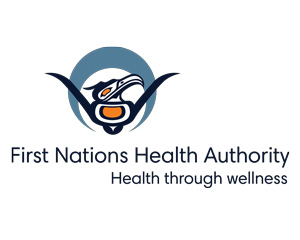Communique

During Flooding:
• If flood waters come in contact with any part of the sewage system, stop using it.
• If power goes out, keep the door closed on the fridge/freezer and keep food inside it. This will keep the food fresh and safe for up to 12hours for a fridge, 24 hours for a half-full freezer, and up to 48 hours for a full freezer.
• Wash hands with soap and water if you come in contact with flood water. It's very possible that it's been contaminated and could make you sick.
• Stay away from flood waters and fast-moving rivers
After Flooding:
• Confirm with community or emergency officials before going back to your home.
• Precautions should be taken after a flood or when food comes into contact with flood waters. It is hard to make food safe to eat once it has been exposed to flood waters that are heavily contaminated.
Water Safety
If you have your own water intake from a stream or a domestic well, there are things you can do to protect your water system.
Surface water supplies
Move all pesticides, chemicals (including disinfectants for water treatment) and other contaminants to an elevated location so they don't get mixed into the flood waters.
You can protect surface water intakes by placing sandbags around them. This may minimize damage during a flood when debris in streams may be greater than normal. Extreme caution should be used when working around creeks and rivers. Flowing water can present a drowning hazard.
Wells
If you have a domestic well, ensure that your wellhead is protected with a surface seal and a cap. A registered well-driller is required to do this work.
https://www2.gov.bc.ca/gov/content/environment/air-land-water/water/groundwater-wells-aquifers/groundwater-wells/information-for-well-drillers-well-pump-installers
Turn off the electricity to your well pump just prior to the flood. Since water supplies can be impacted by flooding, ensure that you have enough water for at least three days on hand.
Water Safety Source: http://www.health.gov.bc.ca/emergency/pdf/preparing-for-a-flood.pdf
Food Safety after a Flood
If exposed to flood waters, destroy:
• Foods packaged in containers that are not waterproof.
• Bottled drinks and home preserves containers that are difficult to clean.
• Canned goods that:
o Appear to have a broken seal
o Show signs of bloating or seepage
• Any previously-opened packaged foods.
Commercially-canned foods in good condition may be salvaged by
- Removing the label.
- Washing the can in warm soapy water and then rinsing.
- Sanitizing in a solution of 40 mL of bleach in 1 litre of water (approx. 5 ounces or 10 tablespoons of bleach per gallon of water).
- Marking the contents on the food container if it will not be used right away.
Discard food that:
• Is unpackaged and was exposed to flood waters, including fresh fruit and vegetables
• Was not kept at below 4 degrees centigrade, whether or not it was exposed to flood water.
• Is considered higher-risk, including:
• Cooked grains
• Cooked vegetables
• Dairy products
• Eggs
• Meat & poultry
• Seafood
Flood Safety Information
For more information:
CMHC: Flood Cleanup
https://www.cmhc-schl.gc.ca/en/maintaining-and-managing/managing-first-nation-properties/maintenance-solutions/mould-in-housing/mould-prevention-and-flood-cleanup
Septic Systems - What to Do after the Flood:
https://www.epa.gov/ground-water-and-drinking-water/septic-systems-what-do-after-flood

